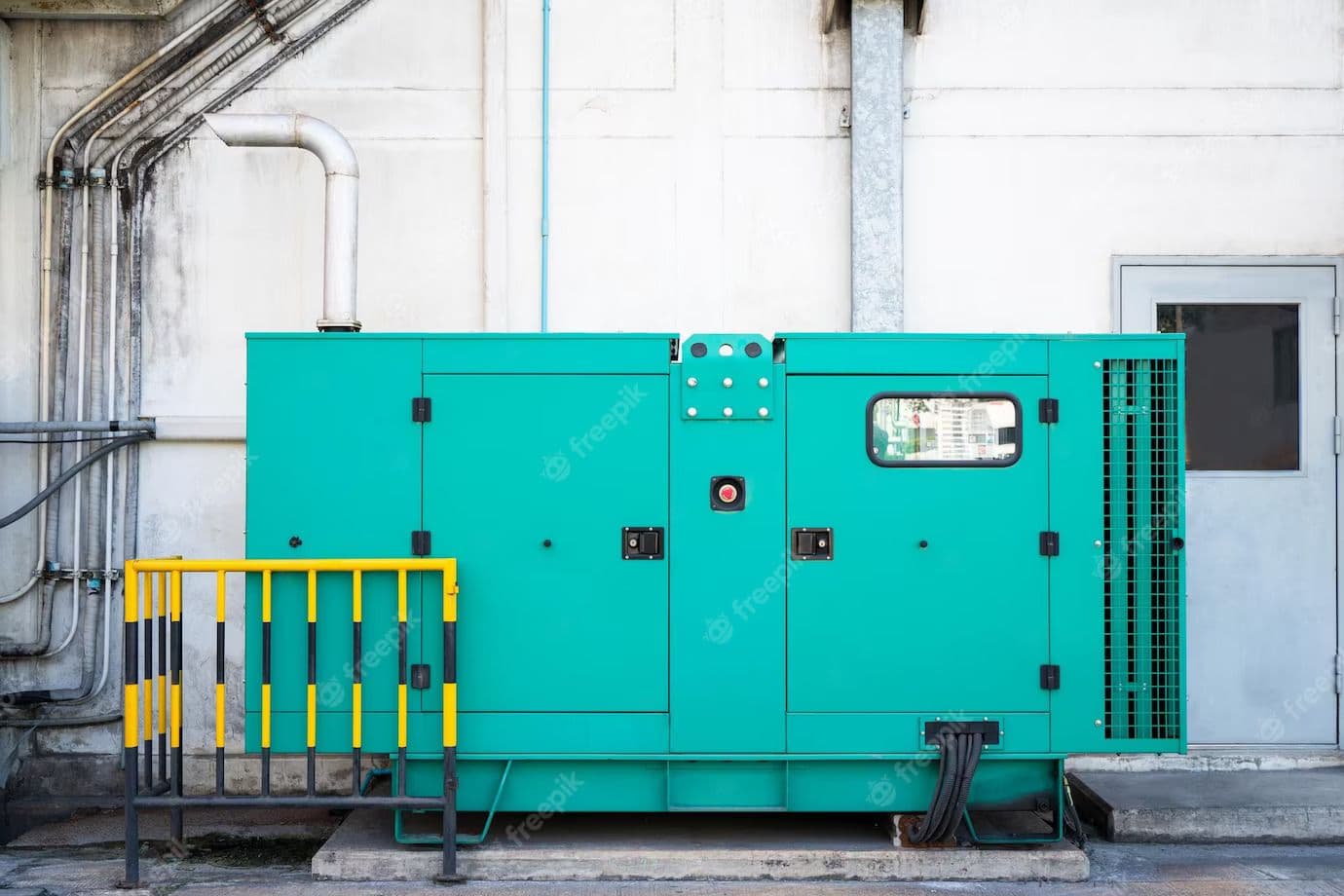
Optimizing Electric Power Transmission: Enhancing Efficiency and Reliability
Optimizing Electric Power Transmission: Enhancing Efficiency and Reliability
Electric power transmission is a critical component of the electrical infrastructure that enables the reliable delivery of electricity to homes, businesses, and essential services. It plays a crucial role in providing everyday electrical services and supporting emergency power needs during unforeseen situations.
Reliability of Electrical Services:
Electric power transmission systems form the backbone of the electrical grid, enabling the efficient distribution of electricity across vast distances. This infrastructure ensures that homes, offices, hospitals, and other establishments can access a reliable power supply for everyday operations. Without a robust power transmission system, interruptions, voltage fluctuations, and blackouts could disrupt essential services and cause inconvenience.
Emergency Power and Backup Systems:
The need for uninterrupted power becomes crucial during emergencies such as natural disasters or unexpected power outages. It facilitates the efficient deployment of emergency power sources, such as backup generators or battery systems, to critical facilities like hospitals, emergency response centers, and shelters. These backup systems provide temporary power until the regular power supply is restored, ensuring the continuous operation of life-saving equipment and maintaining essential services for affected communities.
Importance of Pool Bonding:
Pool bonding, although not directly related to power transmission, plays a significant role in electrical safety. Pool bonding involves connecting all metal components within and around a pool area to a common ground, creating a path for electrical currents to dissipate safely. Proper adhesion prevents the risk of electric shock in and around the pool, ensuring the safety of swimmers and individuals nearby.
Collaborative Efforts for Reliability:
Maintaining a reliable transmission system requires collaborative efforts among power generation companies, transmission operators, and distribution utilities. Regular maintenance, monitoring, and infrastructure upgrades are vital to ensure the resilience and efficiency of the power transmission network.
Additionally, implementing advanced technologies, such as real-time monitoring systems and predictive analytics, helps identify potential issues and allows for proactive measures to prevent disruptions.
Electric power transmission is the backbone of our electrical infrastructure, ensuring the reliable delivery of electricity for everyday services and emergency power needs. It enables the continuous operation of essential facilities during power outages and contributes to public safety. Furthermore, integrating pool bonding practices enhances electrical safety in recreational areas. By recognizing the importance of electric power transmission and implementing necessary measures, we can improve the reliability and security of our electrical services for the benefit of all.
Maximizing Renewable Energy Integration
They are essential for ensuring the efficient distribution of clean energy to end-users. With reliable electrical services, the seamless transfer of renewable energy from generation sources to consumers would be possible. From installing and maintaining transmission infrastructure to managing grid systems, electrical services enable the smooth flow of renewable energy, optimizing its integration into the existing electrical grid.
Electrical services contribute significantly to successfully implementing renewable energy initiatives and the transition towards a more sustainable energy future by providing the necessary expertise and support.
Management of Electric Power Transmission: Key Players and Responsibilities
Transmission system operators (TSOs) or grid operators typically manage electric power transmission. These entities are responsible for the operation, control, and maintenance of the transmission infrastructure that forms the backbone of the electrical grid. TSOs ensure reliable and efficient electricity transmission from power generation sources to distribution networks and large consumers, such as industries and cities. They monitor and balance the flow of electricity, manage voltage levels, and coordinate with other electricity sector stakeholders to ensure the transmission system's stability and security. TSOs work closely with regulatory authorities, power generators, distribution companies, and other entities involved in the electricity supply chain to ensure the smooth operation of the transmission network.
The efficient and reliable management of electric power transmission is crucial for ensuring a stable and uninterrupted electricity supply. This requires the collaboration and coordinated efforts of various key players in the electricity sector.
Electrical Services in Power Transmission Management:
Electrical services encompass a range of activities related to the design, installation, maintenance, and repair of electrical systems. In power transmission management, electrical services are critical in ensuring the efficient distribution of electricity from generation sources to end-users. They are responsible for maintaining transmission infrastructure, monitoring the grid for faults or outages, and addressing electrical issues promptly. Electrical service providers collaborate with transmission system operators (TSOs) to optimize the performance and reliability of the transmission network.
Emergency Electricians and Power Restoration:
During emergencies, such as power outages or natural disasters, emergency electricians are essential for the swift restoration of electrical services. These skilled professionals are trained to diagnose and repair electrical faults, ensuring the safety and well-being of individuals and minimizing disruptions to the power supply. In collaboration with electrical services and TSOs, emergency electricians play a crucial role in identifying and rectifying transmission-related issues, helping restore the power grid efficiently.
The management of electric power transmission involves the collaborative efforts of various key players, including electrical services, emergency electricians, emergency power providers, and adherence to pool bonding standards. These stakeholders contribute to the efficient and reliable transmission system operation, ensuring the seamless delivery of electricity to end-users. By fulfilling their respective responsibilities, they are crucial in maintaining a stable and secure electric power transmission infrastructure, ultimately supporting uninterrupted electrical services and safeguarding public safety.
Enabling Reliable and Efficient Energy Delivery
The importance of electric power transmission cannot be overstated, as it serves as the backbone of our modern energy infrastructure. It enables the reliable and efficient delivery of electricity to end-users, supported by essential components such as electrical services, emergency electricians, emergency power, and pool bonding. Electrical services play a crucial role in managing the transmission network, ensuring the smooth operation and maintenance of the infrastructure. During emergencies or unforeseen events, emergency electricians provide prompt assistance to restore power and maintain electrical safety. Emergency power resources offer backup solutions to critical facilities. At the same time, pool bonding safeguards individuals by preventing electrical hazards. Altogether, electric power transmission and its associated elements ensure the availability of uninterrupted and secure electricity, supporting the smooth functioning of our daily lives and vital services.
Becoming an Assistant in Electrical Power Transmission: Steps to Follow
To become an assisted electrical power transmission professional, you can follow these general steps:
Obtain a relevant education:
Pursue a degree or diploma in electrical engineering, power systems, or a related field. Acquire a strong foundation in electrical principles, power transmission systems, and renewable energy integration.
Gain practical experience:
Seek internships, co-op programs, or entry-level positions in the electrical power industry. This hands-on experience will help you develop practical skills and a deeper understanding of power transmission systems.
Obtain necessary certifications:
Depending on your location, certifications or licenses may be required to work in electrical power transmission. Research and obtain the necessary certificates to enhance your professional credibility.
Continuously update knowledge:
Stay updated with the latest advancements in power transmission technologies, grid management systems, and renewable energy integration. Attend workshops, seminars, and industry conferences to stay abreast of industry trends and developments.
Develop technical skills:
Familiarize yourself with power system analysis tools, computer-aided design (CAD) software, and simulation software commonly used in power transmission engineering. Enhance your knowledge of electrical codes, standards, and regulations.
Build a professional network:
Connect with electrical power transmission industry professionals through networking events, online platforms, and professional organizations. Building a solid network can provide mentorship, collaboration, and career growth opportunities.
Gain expertise in renewable energy integration:
As renewable energy plays an increasing role in power transmission, develop a deep understanding of renewable energy sources, grid integration challenges, and emerging technologies. Stay updated with the latest trends and best practices in renewable energy integration.
Seek career opportunities:
Apply for positions in power transmission companies, transmission system operators, engineering firms, or utility companies. Consider roles such as power system engineer, transmission planner, grid operations specialist, or renewable energy integration specialist.
Continuously learn and adapt:
The field of electrical power transmission is dynamic, with new technologies and regulations emerging regularly. Stay curious, embrace lifelong learning, and be open to adapting to new challenges and opportunities.
Professional growth: Pursue professional development opportunities, such as advanced degrees or specialized certifications, to enhance your expertise and open doors for career advancement in electrical power transmission.
Electric Power Transmission is the vital link that enables the efficient and reliable delivery of electricity to our homes, businesses, and communities. It plays a pivotal role in the modern energy infrastructure, ensuring seamless power transfer from generation sources to end-users. By managing and optimizing transmission systems, we can meet the growing demand for electricity while integrating renewable energy sources and promoting sustainability. As technology advances and the need for clean energy solutions becomes more pressing, the importance of Electric Power Transmission continues to grow. It remains at the forefront of our efforts to create a resilient, secure, and sustainable energy future for generations to come.
Its significance extends beyond its role in electricity delivery. It facilitates economic growth by enabling industries to operate efficiently and power critical infrastructure. Moreover, it supports the electrification of transportation, paving the way for electric vehicles and reducing reliance on fossil fuels. As we strive for energy security and grid resilience, transmission infrastructure's continuous development and modernization become paramount.
Collaboration among stakeholders, including governments, utilities, and technology innovators, is essential to drive advancements in grid infrastructure and ensure the seamless integration of renewable energy sources. By recognizing the vital importance of Electric Power Transmission, we can forge a sustainable energy landscape that empowers communities, mitigates climate change, and fosters a brighter future for all.



